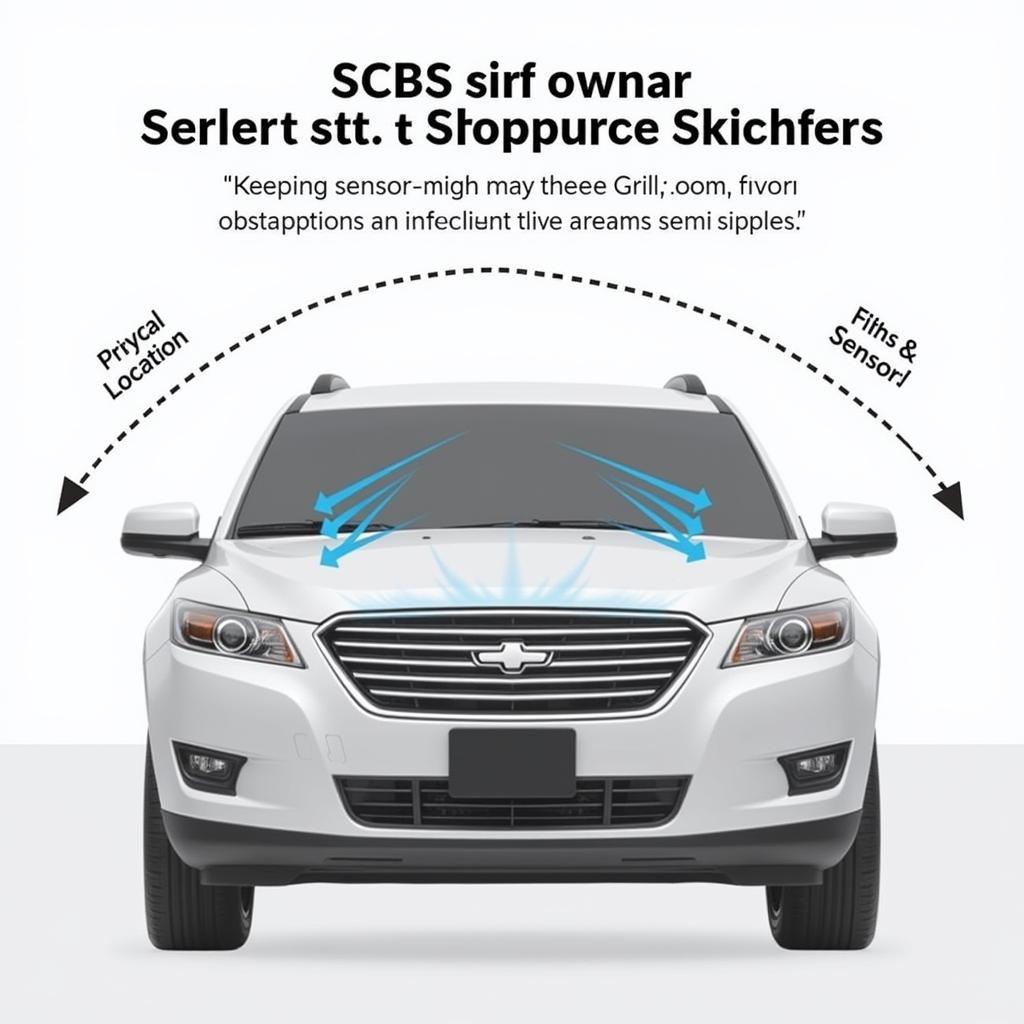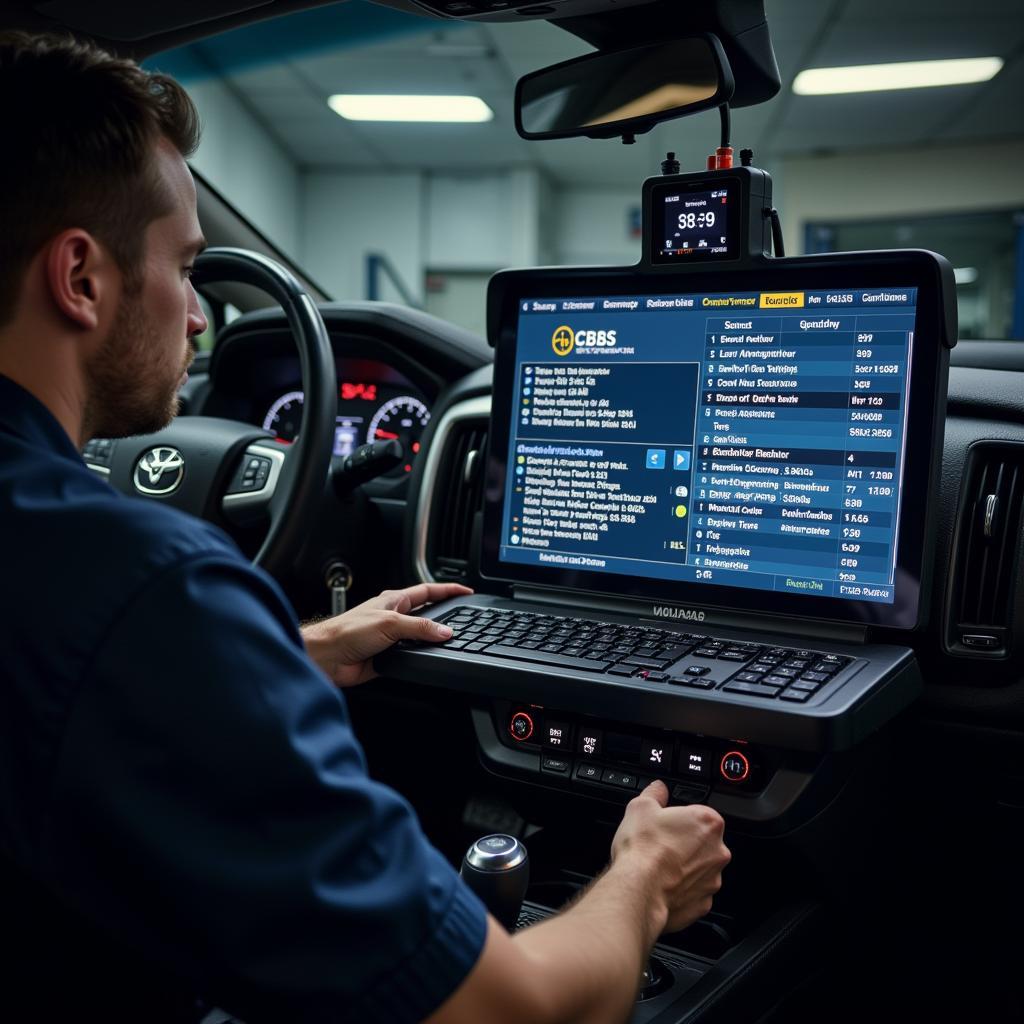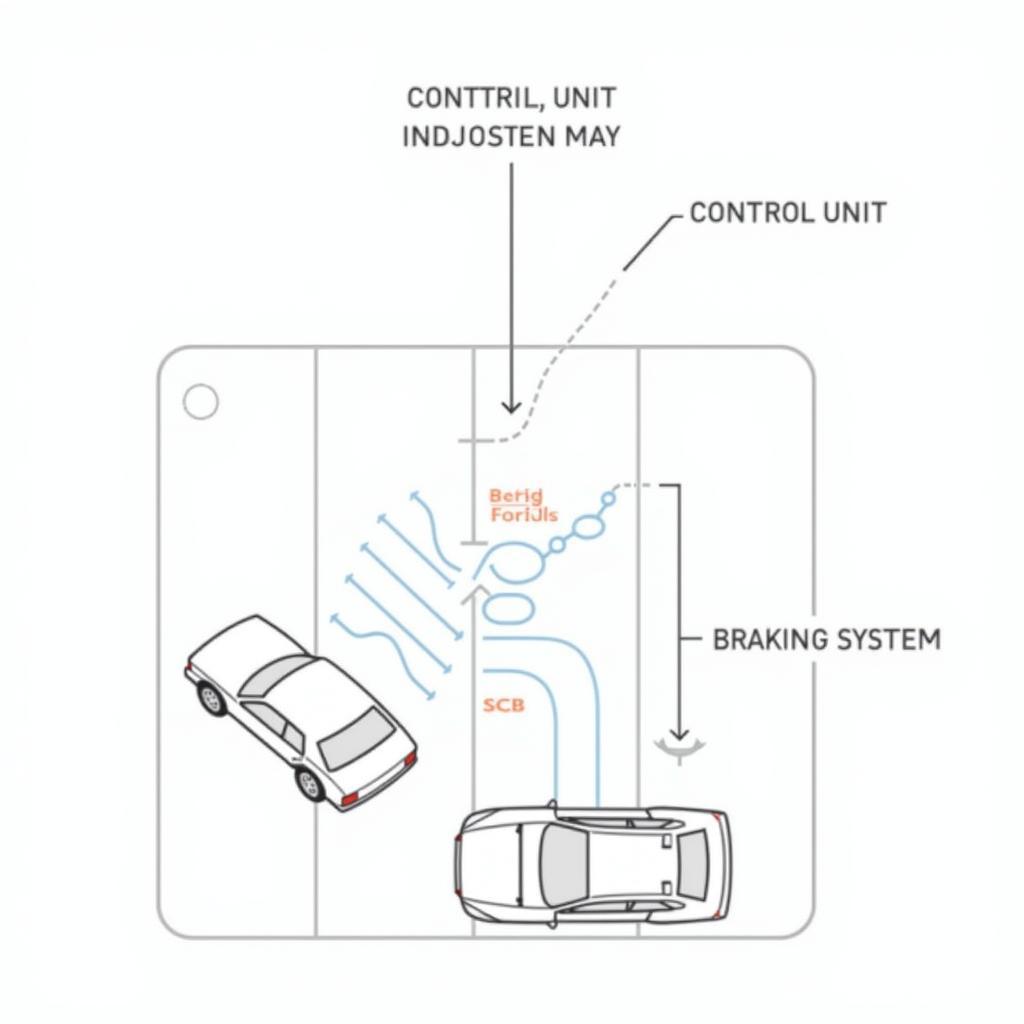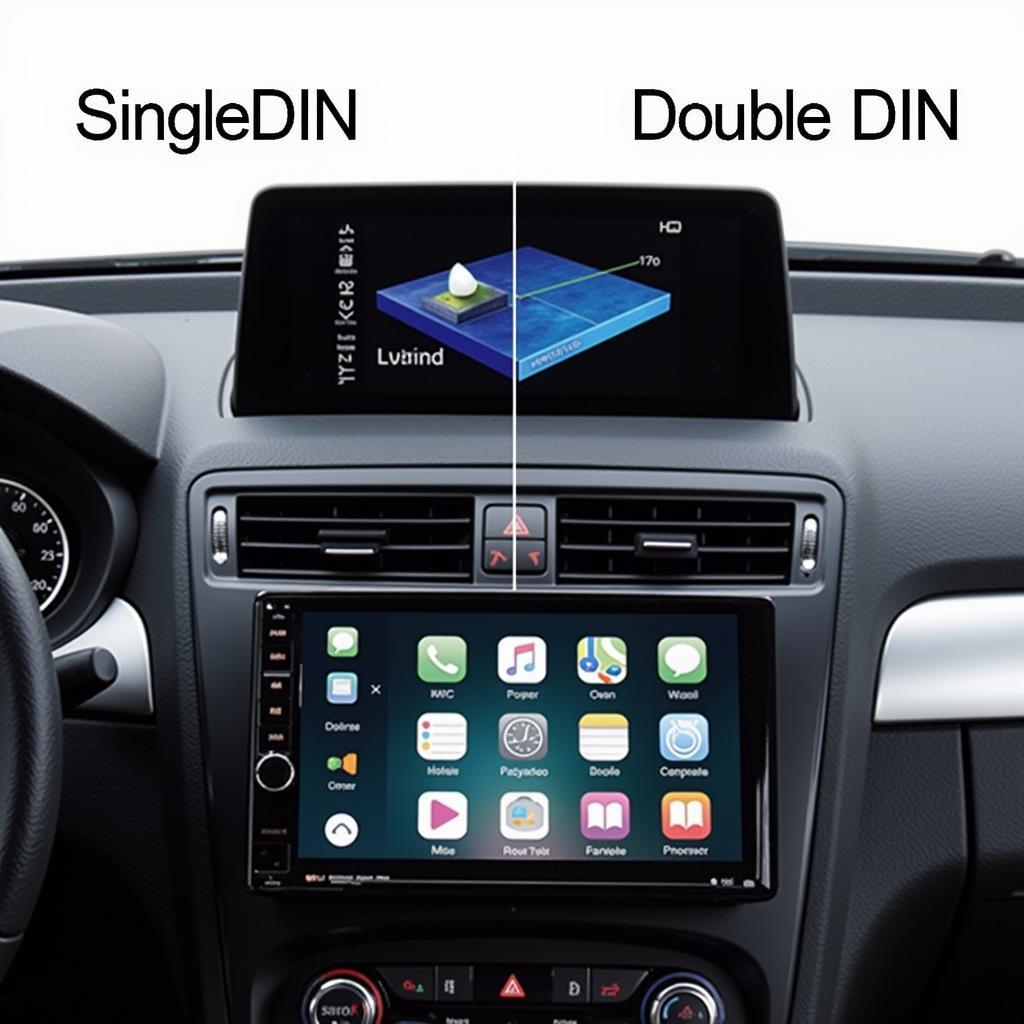Smart city brake support (SCBS) warning distance is a crucial aspect of modern vehicle safety, designed to prevent or mitigate low-speed collisions in urban environments. This system uses sensors to detect obstacles ahead and alerts the driver if a collision is imminent. Understanding how this system works, its limitations, and how to maintain it is essential for all drivers equipped with this technology.
How Does Smart City Brake Support Work?
SCBS utilizes a combination of radar, laser, or camera-based sensors to constantly monitor the distance between your vehicle and the one in front. When the system detects a potential collision risk within a specific speed range (typically under 30 mph), it issues an audible and visual warning. If the driver fails to react, the system can automatically apply the brakes to reduce the severity of the impact or even prevent the collision altogether. This technology focuses on low-speed scenarios, common in city driving, where distractions and sudden stops are frequent.
Factors Affecting SCBS Warning Distance
Several factors can influence the effectiveness and warning distance of the SCBS system:
- Speed: The system is designed to operate at lower speeds. At higher speeds, other safety systems like automatic emergency braking (AEB) take over.
- Weather Conditions: Adverse weather conditions such as heavy rain, snow, or fog can affect the sensor’s ability to accurately detect obstacles, potentially reducing the warning distance or disabling the system entirely.
- Obstacle Type: The system is more effective at detecting solid objects like other vehicles. Pedestrians, cyclists, and animals may be harder to detect, particularly in low-light conditions.
- Sensor Obstructions: Dirt, debris, or snow covering the sensors can impair their function. Regular cleaning is crucial for optimal performance.
 Smart City Brake Support Sensor Locations
Smart City Brake Support Sensor Locations
Common Issues with Smart City Brake Support Warning Distance
Sometimes, drivers may experience issues with their SCBS system, such as false warnings or a malfunctioning system. Here are some common problems and potential solutions:
- False Warnings: These can be caused by sensor misinterpretation, often due to environmental factors like heavy rain or bright sunlight. While frustrating, these are generally not a cause for concern unless they occur frequently.
- System Malfunction: A persistent warning light or a complete system failure usually indicates a problem requiring professional diagnosis. This could be due to a faulty sensor, wiring issue, or software glitch.
- Reduced Warning Distance: If you notice the system warning later than usual, it could be due to dirty sensors or a system malfunction.
Troubleshooting SCBS Warning Distance Problems
- Check the Sensors: Inspect the sensors for dirt, debris, or damage. Clean them gently with a soft cloth.
- Consult the Owner’s Manual: Your owner’s manual provides specific information about your vehicle’s SCBS system, including troubleshooting tips.
- Seek Professional Help: If the problem persists, take your vehicle to a qualified technician for diagnosis and repair. Remote diagnostic services can often pinpoint the issue quickly. Software updates or recalibration might be necessary.
 Smart City Brake Support Diagnostic Software
Smart City Brake Support Diagnostic Software
“Regular maintenance and understanding the limitations of your SCBS system are key to ensuring its effectiveness in preventing collisions,” advises John Smith, Senior Automotive Electrical Engineer at AutoTech Solutions.
Maintaining Your Smart City Brake Support System
Regular maintenance is essential for ensuring the proper functioning of your SCBS system. This includes:
- Sensor Cleaning: Keep the sensors clean and free from obstructions.
- Software Updates: Ensure your vehicle’s software is up-to-date, as manufacturers often release updates that improve system performance.
- Professional Inspections: Have your SCBS system inspected by a qualified technician during regular service appointments.
 Smart City Brake Support System Diagram
Smart City Brake Support System Diagram
“Staying proactive with maintenance and understanding your vehicle’s technology can significantly enhance your safety on the road,” adds Maria Garcia, Lead Diagnostic Technician at Advanced Auto Diagnostics.
Conclusion
Smart city brake support warning distance is a critical safety feature that can help prevent low-speed collisions. By understanding how the system works, its limitations, and how to maintain it, you can maximize its effectiveness and enhance your safety on the road. Regular maintenance, sensor cleaning, and professional diagnostics are crucial for ensuring optimal performance and preventing potential issues with your SCBS system. Remember to consult your owner’s manual for specific information regarding your vehicle’s SCBS features.
FAQ
- What is the typical SCBS warning distance? The warning distance varies depending on factors like speed and obstacle type, but it’s usually within a few meters.
- Does SCBS work in all weather conditions? No, adverse weather like heavy rain or snow can affect sensor performance.
- Can I disable the SCBS system? Usually, you can temporarily disable the system through your vehicle’s settings, but it’s generally not recommended.
- What should I do if I get a persistent SCBS warning light? Consult your owner’s manual and seek professional diagnosis if necessary.
- How often should I clean the SCBS sensors? It’s recommended to clean the sensors regularly, especially during periods of inclement weather.
- Does SCBS replace the need for driver attention? No, SCBS is a driver-assist feature, not a substitute for attentive driving.
- Can SCBS prevent all collisions? No, SCBS is designed to mitigate or prevent low-speed collisions and may not be effective in all situations.

